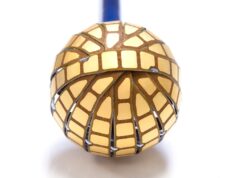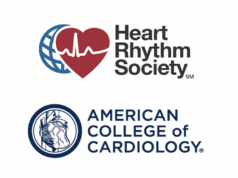
Michel Haïssaguerre (Hôpital Cardiologique du Haut Lévêque, Bordeaux, France) and Etienne M Aliot (Nancy University Hospital, Cardiology Department, Institut Lorrain du Cœur et des Vaisseaux, Vandoeuvre-les-Nancy, France), chairmen of the International Symposium on Catheter Ablation Techniques (ISCAT; 15–17 October 2014, Paris, France) discuss the highlights of this year’s meeting with Cardiac Rhythm News.
Could you give us a round-up of the key highlights at the 10th ISCAT?
This year, although we are in difficult economic times, we can again look back towards a meeting with good collaboration between industry and the medical field. We were proud to welcome a broad field of notorious national and international speakers, and an audience close to one thousand attendees.
At this moment, one could ask every electrophysiologist whether the future of electrophysiology should focus in faster and better mapping or different ablation energy and techniques. This year, we saw improvement in both fields at ISCAT.
Could you highlight the areas in electrophysiology where you have seen more development over the last year?
We have seen three significant improvements including:
- Body surface mapping of atrial fibrillation and also ventricular fibrillation, both showing re-entrant driver (rotor);
- The development of multielectrode ablation, including bipolar ablation and the use of electroporation;
- And, more integration of imaging and electrophysiology data.
What new technologies presented at this year’s ISCAT would you consider worth highlighting?
Regarding newer ablation technology, single shot devices were omnipresent during this meeting. We saw new data on cryoablation using the Arctic Front Advance catheter from Medtronic and new data on radiofrequency ablation using the PVAC gold catheter (non-irrigated) from Medtronic and the nMARQ catheter (irrigated) from Biosense Webster. Silent emboli still remain a concern, but some of their causes have been resolved (interaction between electrodes) and new results look promising.
The opposite is happening in the field of mapping. While ablation strategies aim to create larger and more effective lesions, mapping strategies aim to analyse smaller regions with more accuracy.
The evolution in the field of mapping looks even more exciting. We saw data on the CardioInsight system, a non-invasive electrocardiographic body surface mapping system, which maps rotor activity and foci in patients with atrial fibrillation. This system seems especially interesting to understand and improve outcome of persistent atrial fibrillation.
We also saw multiple presentations on the usefulness of multipolar mapping catheters (PentaRay/Biosense Webster, LiveWire/St Jude Medical and Orion/Boston Scientific catheters).
We have also waited for a new competitor in the field of electro-anatomical mapping and we saw preliminary promising experiences with the Rhythmia system (Boston Scientific), which is designed to acquire fast and high density maps of atrial tachycardia and ventricular tachycardia.
Another relevant topic discussed was the concern about the increase in brain tumours in invasive cardiologists. Data (however limited) show a dominant location in the left hemisphere-closest to the fluoroscopic system-indicating a direct relationship with radiation exposure. Different strategies are trying to limit fluoroscopic exposure; among those we saw the French experience with the MediGuide system (St Jude Medical). This technology visualises the magnetic catheter tips on the fluoroscopic screen in real-time and with high accuracy.
Another development discussed was the MRI-guided mapping and ablation of tachycardia. The idea is interesting; however, concerns about magnetic effects on the body should be investigated, the magnetic environment/noise is also heavy, the artifacts of cardiac devices are still challenging to create good images and the path towards this kind of procedures still looks long.
Where would you like to see more research and possible answers for the next ISCAT meeting?
The biggest challenge in the field of atrial fibrillation is better mapping and understanding of individual sources in a given patient with atrial fibrillation; one of the questions to answer should be “is pulmonary vein isolation always necessary?” We also need to understand the difference between physiological and pathological CFAE sites and to find EGM characteristics of rotor sites in order to create a patient-tailored ablation approach.
In the field of ventricular arrhythmias, the biggest challenge is to obtain larger and transmural lesions to terminate reentry circuits, and new ablation strategies are needed. Hopefully we will see new data on good efficacy of irrigated needle ablation, bipolar ablation and even high-intensity focus ultrasound (HIFU) and why not electroporation.












